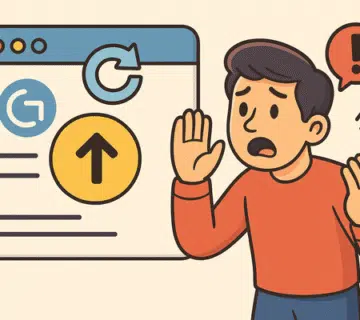When Do You Need a Website Redesign?
The Importance of Website Design
The importance of website design is one of the key factors in enhancing user experience and visitor behavior.
This article discusses the benefits of redesigning a website, the signs indicating when it’s necessary, and effective strategies to ensure the success of the redesign process. Learn how a well-designed website can impact brand identity and boost user interaction with your content.
The article also covers the importance of responsive web design and how data analytics tools can be used to improve overall site performance.

The Importance of Website Design
Website design is a fundamental factor that significantly affects user experience and visitor behavior. A good design not only attracts visitors but also reinforces brand identity and effectively reflects the company’s values and goals.
When the design aligns with the needs of the target audience, it helps improve engagement and increase conversion rates, which means achieving the desired business goals.
Key elements of good design include a visually appealing and easy-to-navigate user interface, which helps capture visitor attention from the first moment.
Users tend to stay longer on websites that offer a smooth and comfortable browsing experience, which in turn helps reduce bounce rates and increase time spent on the site.
Therefore, the importance of website design goes beyond aesthetics, as these elements directly impact the site’s overall performance.
On the other hand, modern web design trends highlight the need to keep up with technological and visual developments in the web world.
These trends include the growing focus on responsive design that adapts to all devices, increasing the chances of reaching a broader audience. Incorporating innovations such as animations and interactive user experiences enhances browsing and makes the site more attractive and professional.
Thus, improving user experience through good design is not just an option, but a necessity for the success of any online project.
Signs That Indicate a Website Redesign Is Needed
When it comes to updating websites, several signs may indicate that a redesign is necessary. One of the most obvious signs is slow page loading. If your site pages take too long to load, this can negatively affect the user experience and lead to a drop in visitor numbers.
Studies show that visitors expect pages to load within a few seconds, and if your site fails to meet this expectation, it may be time to consider a redesign.
Another sign that a redesign may be needed is poor responsiveness on different devices. In an age where people use a variety of devices to access the internet, responsive design becomes essential.
If your site doesn’t function well on mobile phones or tablets, it can negatively affect user interaction and lead to missed business opportunities. Therefore, it’s important to ensure your design is suitable for all screen sizes.
Additionally, weak communication channels or low user interaction can signal the need for a redesign.
If you’re noticing a drop in comments or social media shares related to your site, it could be due to a lack of clarity in the interface or an unattractive design that causes users to disengage.
Moreover, changes in branding or business goals may require updating the design to reflect the new direction. If your brand identity is evolving, your website design should reflect those new values to ensure effective communication with your audience.

Benefits of Website Redesign
Redesigning a website is a vital process for many businesses aiming to improve their digital performance. This process can deliver multiple benefits that enhance user experience and boost engagement.
One of the main benefits lies in improving the user experience. Modern, easy-to-use websites attract visitors and encourage them to stay. Redesigning allows for better navigation and visual structure, making users feel more comfortable while browsing your content.
Additionally, a redesign can increase customer loyalty. When visitors can easily interact with the site, they are more likely to return.
Redesigned websites are often more interactive, facilitating the exchange of information and feedback between visitors, which strengthens the community around the brand.
Another important aspect to highlight is the impact of redesigning on search engines. Websites with modern design and optimized structure that comply with current standards have a better chance of ranking higher in search results.
A notable example is “Newkter,” a company that successfully increased both web traffic and conversion rates after a redesign.
Finally, redesigning a website improves overall performance by resolving technical issues, leading to faster loading times and better site efficiency.
Therefore, a website redesign is a worthwhile investment that can produce tangible results aligned with business objectives.
Strategies for an Effective Redesign
Redesigning a website is a strategic step that requires careful planning and systematic execution to ensure effectiveness. First, you need to develop a comprehensive plan outlining the objectives of the redesign.
Do you want to improve user experience, increase your visitor base, or enhance brand clarity? These questions form the foundation for all subsequent decisions related to the redesign.
Once you have a plan, the next step is to research your target audience’s preferences. You need to understand what visitors are looking for on your current site and what pain points they face.
By conducting such studies, gathering customer feedback, and using surveys, you can shape a new design that meets their needs and expectations.
Additionally, analyzing your current website data is essential. You should review key performance indicators such as conversion rates, time spent on page, and bounce rates.
These data points offer valuable insights into visitor behavior on your site and can inform design improvements. For example, if users are quickly leaving a specific page, you may need to redesign it to better capture their attention.
Regarding tools and technology, many software solutions can aid in the redesign process. Tools like Adobe XD and Sketch are popular among designers for their user-friendly interfaces and support for creating interactive prototypes.
You can also use data analysis tools like Google Analytics to gain deeper insights into how users interact with your current site.






No comment